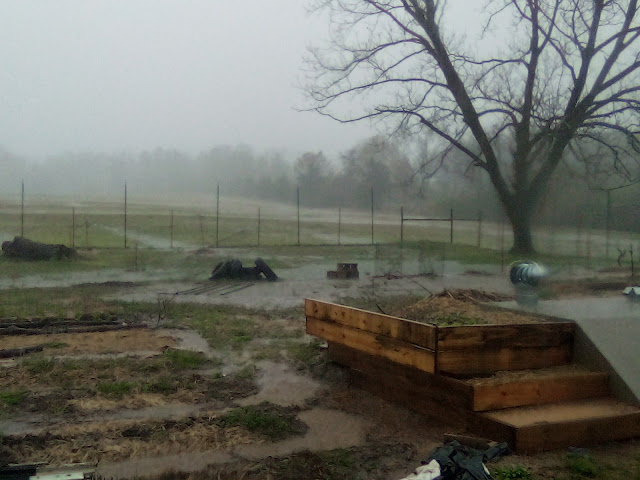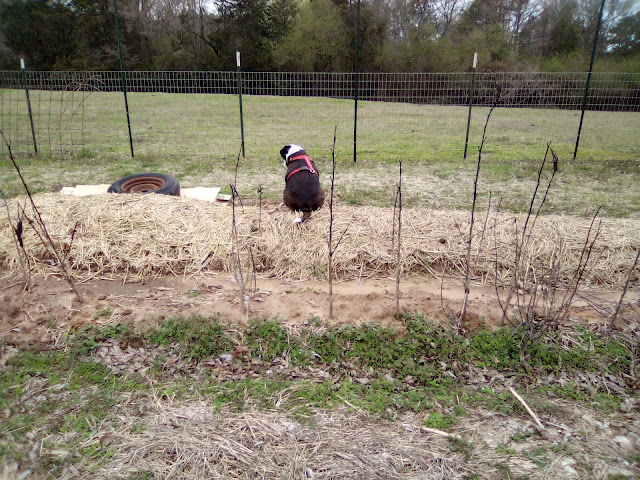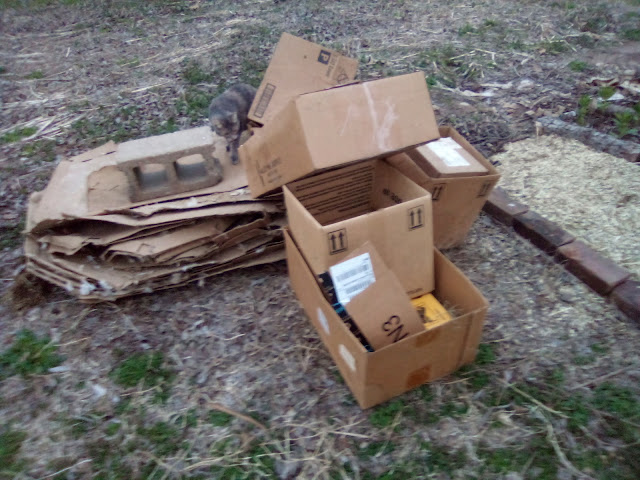I think I've heard the term "chinquapin" during my life, but it was probably in reference to the Chinquapin Oak (Quercus muehlenbergii).
I didn't realize there are actual "chinquapin" trees - that thare are, in fact, two native chinquapins: the Ozark chinquapin (Castanea ozarkensis) and the Allegheny chinquapin (Castanea pumila). They are in the same genus as the Chinese chestnut trees that grow at work, and the American Chestnut (Castanea dentata).
I know, I know...I spend way too much time on "The YouTube." But I can say that I've learned a lot. One of the channels I really enjoy is the "Backyard Ecology" channel. Because I've gotten very interested in putting native plants in my yard and in the woods where I've been removing the invasive privet, I'm always especially interested in the plant profile videos they post.
And one of the recent videos was about the Allegheny chinquapin. In the video, Anthony talks about how valuable the trees are to wildlife, and of course that made me think, "I want one!"
I wanted to see if Food Forest Nursery carries this tree, but didn't see where they do. However, it was listed in the "catalog" of Pine Ridge Nursery, just down the road from me in London. And interestingly enough, they also had a chinquapin called "Ozark chinquapin." Being in the Ozark mountains, that name caught my interest so I had to ask The Google to tell me more about it.
Now sometimes when I go down a rabbit hole on something, you could call me "Alice" because I get started and I can struggle to find may way back out! This was one of those instances where the more I learned, the deeper down the rabbit hole I went.
One of the first articles I read was from the Arkansas Democrat-Gazette, titled "Arkansas efforts to restore vanishing Ozark chinquapin trees take root and grow."
From that article, I learned that the Ozark chinquapin used to be a common tree in our part of the state, but was pretty much wiped out by the same blight that killed the American Chestnut trees in the eastern United States.
And I also learned that there's a group of volunteers who have been working to save the tree. So I hopped on over to their website to find out what they are working on. From the foundation's website:
The Ozark Chinquapin Foundation (OCF) is a volunteer driven, 501C3 non-profit organization dedicated to restoring the Ozark chinquapin to the woodlands and forests of the south-central United States as a mature, seed producing tree species. We are working to establish a viable seed base through research and manual cross-pollination of surviving trees to develop a 100% pure Ozark chinquapin that can reproduce and thrive in our forests.
Turns out they've been at this for a while now. and they've actually achieved some pretty astonishing results with their efforts.
At their 2020 conference, Leslie Bost, one of the foundation board members, gave a great presentation that explained what the trees are up against, described the steps the foundation is taking to save the species, and showed some interesting and very encouraging data about their work.
I also learned that membership in the foundation is $30/year, and with the membership comes a chance to receive some of the Ozark chinquapin nuts (seeds) from trees showing some degree of resistance.
Sign me up!
Because I was so late learning about the foundation, and so late getting signed up, I really didn't expect to get any nuts this year, because they're sent out to members in order of sign-up, and if they run out, you move to the top of the list for the next year.
So I was shocked and delighted to open my mailbox the other day and find a small envelope bearing an "Ozark Chinquapin Foundation" return label!
Inside the envelope was a small ziploc bag containing some kind of moist substrate and several little nuts each with a thin little taproot!
I wasn't going to be able to plant them right away so I put them in the refrigerator as the instructions said.
I couldn't sleep that night. I had chinquapin on the brain, and I planted them over and over and over in different places all night long. And when I got up the next morning, I still didn't really know where I was going to put them.
I knew where I wanted to put them - I wanted them near the area where the storm took out so many trees in 2019 - the area where I've been clearing privet. But the problem is the cattle. Any tree that's planted down there had to be well protected or it would be eaten or trampled into the ground.
But eventually I came up with what I hoped was a good plan, and on Wednesday afternoon after I got off work, I loaded up my little garden cart and headed to the woods.
First thing I had to do was build some type of protective cage to go around the trees. It needed to be tall to protect the trees from deer browsing, but also needed to have small openings to keep the rabbits and squirrels from getting inside. Not really having anything that satisfied both criteria, I settled on getting the height by using some of the welded wire I had found down in the woods, and getting the protection from rabbits by lining the inside of the cage with chicken wire.
Next, I took my little garden trowel and tried to dig a small hole deep enough for the little tap root. I was afraid of hitting rock, and sure enough, I did. I ended up moving the hole a bit further away from where I wanted it, but I think (hope) I finally found a spot that would work.
I opened the bag of my precious little chinquapins and carefully pulled one out.
I fed the little tap root down into the hole and crumbled the dirt back on top of it. "Live long and prosper," I whispered to the little nut.
I put a layer of old hay around the nut, being careful not to cover the nut itself. I then put a ring of rocks around it, just to help mark where it was planted. And with that done all that was left to do was drive the t-post and put up the cage.
Again, it sounds easy, right? Nope...with so many rocks under the surface, I was only able to drive the post in about six inches.
The post was stable enough to hold the cage, but nowhere near stable enough to stand up to the cattle. What to do?
I went ahead and fastened the cage to the post while I pondered on how to better protect it from the cattle. I had intentionally planted the nut close to one of the big oak trees that blew over in the storm, because I know the cattle won't step over that big log or the limb coming off of it. That left just two sides unprotected.
Funny thing about that dang privet...I've been finding several uses for it. And so that's how I decided I would protect the cage. I would pile privet limbs all around the exposed sides.
Now I'm pretty sure the cattle will stay away from that area because so far they've not shown any inclination to wade into any of the privet limbs I've piled up in various places. Plus, there shouldn't really be anything in that mess that they "want" so they don't have a strong incentive to try to push their way through.
That's the theory I'm going with anyway.
So with one nut planted and protected, I rushed to try to get the second one planted before the sun set. I ended up planting it on the other side of the tree, but closer to the woods. This second tree wasn't protected on two sides like the first, but luckily I was able to drive the post in deep enough that I think it is pretty solid. A ring of privet limbs and branches from the old oak tree all the way around it should help protect it too.
The instructions say that the trees like rocky dry slopes, so I think this area should be perfect. I should be able to get water out of the cattle trough by the barn for most of the summer, so I won't have to haul water all the way from the house.
I planted a third nut in my yard, by a catalpa stump left when that same 2019 storm blew down all those trees in my yard. Right now, this one only has a small cage around it, about 1' tall. It does have chicken wire inside though to protect it from the rabbits. I plan to buy some more of the welded wire with the 1" x 2" openings and replace that short cage.
There are two or three nuts left in the bag and they're going to be planted tomorrow in the upper part of the Barber field. Again, they'll just have small cages lined with chicken wire for now, but that should protect them from deer browsing until I can get some larger cages put in place.
I'm so excited by the thought that I just might actually have some Ozark chinquapin trees growing soon. I've already been out to check on all three of these nuts to see if any have started coming up! Of course they haven't yet, but when they do, you can bet there will be pictures! They're like my new little babies, and I'm their proud ol' mama!

























.jpg)





























